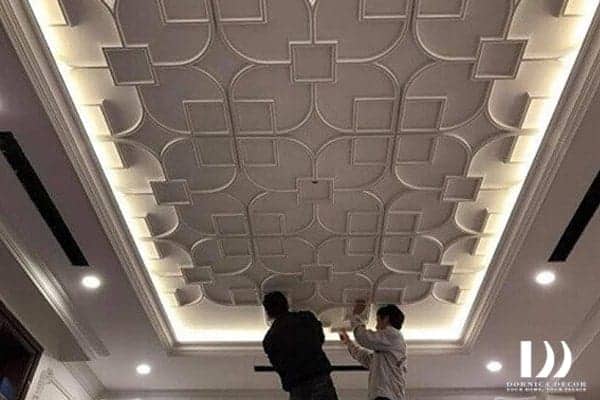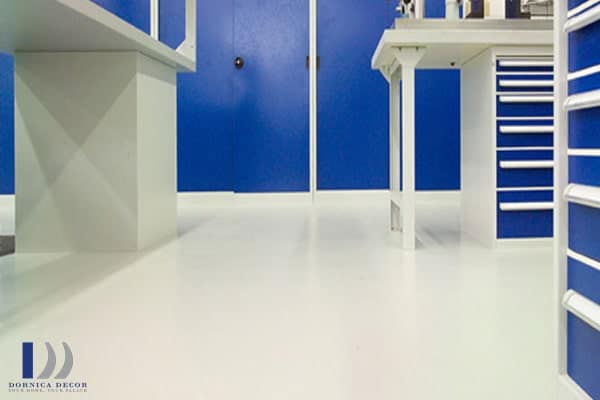[fusion_builder_container type=”flex” hundred_percent=”no” hundred_percent_height=”no” min_height=”” hundred_percent_height_scroll=”no” align_content=”stretch” flex_align_items=”flex-start” flex_justify_content=”flex-start” flex_column_spacing=”” hundred_percent_height_center_content=”yes” equal_height_columns=”no” container_tag=”div” menu_anchor=”” hide_on_mobile=”small-visibility,medium-visibility,large-visibility” status=”published” publish_date=”” class=”” id=”” spacing_medium=”” margin_top_medium=”” margin_bottom_medium=”” spacing_small=”” margin_top_small=”” margin_bottom_small=”” margin_top=”” margin_bottom=”” padding_dimensions_medium=”” padding_top_medium=”” padding_right_medium=”” padding_bottom_medium=”” padding_left_medium=”” padding_dimensions_small=”” padding_top_small=”” padding_right_small=”” padding_bottom_small=”” padding_left_small=”” padding_top=”” padding_right=”” padding_bottom=”” padding_left=”” link_color=”” link_hover_color=”” border_sizes=”” border_sizes_top=”” border_sizes_right=”” border_sizes_bottom=”” border_sizes_left=”” border_color=”” border_style=”solid” box_shadow=”no” box_shadow_vertical=”” box_shadow_horizontal=”” box_shadow_blur=”0″ box_shadow_spread=”0″ box_shadow_color=”” box_shadow_style=”” z_index=”” overflow=”” gradient_start_color=”” gradient_end_color=”” gradient_start_position=”0″ gradient_end_position=”100″ gradient_type=”linear” radial_direction=”center center” linear_angle=”180″ background_color=”” background_image=”” background_position=”center center” background_repeat=”no-repeat” fade=”no” background_parallax=”none” enable_mobile=”no” parallax_speed=”0.3″ background_blend_mode=”none” video_mp4=”” video_webm=”” video_ogv=”” video_url=”” video_aspect_ratio=”16:9″ video_loop=”yes” video_mute=”yes” video_preview_image=”” render_logics=”” absolute=”off” absolute_devices=”small,medium,large” sticky=”off” sticky_devices=”small-visibility,medium-visibility,large-visibility” sticky_background_color=”” sticky_height=”” sticky_offset=”” sticky_transition_offset=”0″ scroll_offset=”0″ animation_type=”” animation_direction=”left” animation_speed=”0.3″ animation_offset=”” filter_hue=”0″ filter_saturation=”100″ filter_brightness=”100″ filter_contrast=”100″ filter_invert=”0″ filter_sepia=”0″ filter_opacity=”100″ filter_blur=”0″ filter_hue_hover=”0″ filter_saturation_hover=”100″ filter_brightness_hover=”100″ filter_contrast_hover=”100″ filter_invert_hover=”0″ filter_sepia_hover=”0″ filter_opacity_hover=”100″ filter_blur_hover=”0″][fusion_builder_row][fusion_builder_column type=”1_1″ layout=”1_1″ align_self=”auto” content_layout=”column” align_content=”flex-start” valign_content=”flex-start” content_wrap=”wrap” spacing=”” center_content=”no” link=”” target=”_self” min_height=”” hide_on_mobile=”small-visibility,medium-visibility,large-visibility” sticky_display=”normal,sticky” class=”” id=”” type_medium=”” type_small=”” order_medium=”0″ order_small=”0″ dimension_spacing_medium=”” dimension_spacing_small=”” dimension_spacing=”” dimension_margin_medium=”” dimension_margin_small=”” margin_top=”” margin_bottom=”” padding_medium=”” padding_small=”” padding_top=”” padding_right=”” padding_bottom=”” padding_left=”” hover_type=”none” border_sizes=”” border_color=”” border_style=”solid” border_radius=”” box_shadow=”no” dimension_box_shadow=”” box_shadow_blur=”0″ box_shadow_spread=”0″ box_shadow_color=”” box_shadow_style=”” background_type=”single” gradient_start_color=”” gradient_end_color=”” gradient_start_position=”0″ gradient_end_position=”100″ gradient_type=”linear” radial_direction=”center center” linear_angle=”180″ background_color=”” background_image=”” background_image_id=”” background_position=”left top” background_repeat=”no-repeat” background_blend_mode=”none” render_logics=”” filter_type=”regular” filter_hue=”0″ filter_saturation=”100″ filter_brightness=”100″ filter_contrast=”100″ filter_invert=”0″ filter_sepia=”0″ filter_opacity=”100″ filter_blur=”0″ filter_hue_hover=”0″ filter_saturation_hover=”100″ filter_brightness_hover=”100″ filter_contrast_hover=”100″ filter_invert_hover=”0″ filter_sepia_hover=”0″ filter_opacity_hover=”100″ filter_blur_hover=”0″ animation_type=”” animation_direction=”left” animation_speed=”0.3″ animation_offset=”” last=”true” border_position=”all” first=”true”][fusion_text columns=”” column_min_width=”” column_spacing=”” rule_style=”default” rule_size=”” rule_color=”” content_alignment_medium=”” content_alignment_small=”” content_alignment=”” hide_on_mobile=”small-visibility,medium-visibility,large-visibility” sticky_display=”normal,sticky” class=”” id=”” margin_top=”” margin_right=”” margin_bottom=”” margin_left=”” font_size=”” fusion_font_family_text_font=”” fusion_font_variant_text_font=”” line_height=”” letter_spacing=”” text_color=”” animation_type=”” animation_direction=”left” animation_speed=”0.3″ animation_offset=””]
Polyurethanes are formed by reacting a polyol (an alcohol with more than two reactive hydroxyl groups per molecule) with a diisocyanate or a polymeric isocyanate in the presence of suitable catalysts and additives. Because a variety of diisocyanatos and a wide range of polyols can be used to produce polyurethane, a broad spectrum of materials can be produced to meet the needs of specific applications.
Applications for Polyurethane:
Apparel:
When scientists discovered that polyurethanes could be made into fine threads, they were combined with nylon to make more lightweight, stretchable garments. Over the years, polyurethanes have been improved and developed into spandex fibers, polyurethane coatings and thermoplastic elastomers.
Because of today’s advances in polyurethane techniques, manufacturers can make a broad range of polyurethane apparel from man-made skins and leathers used for garments, sports clothes and a variety of accessories.

Appliances:
Polyurethanes are an important component in major appliances that consumers use every day. The most common use for polyurethanes in major appliances is rigid foams for refrigerator and freezer thermal insulation systems. Rigid polyurethane foam is an essential and cost-effective material that can be used for meeting required energy ratings in consumer refrigerators and freezers. The good thermal insulating properties of rigid polyurethane foams result from the combination of a fine, closed-cell foam structure and cell gases that resist heat transfer.

Automotive:
Polyurethanes are used throughout cars. In addition to the foam that makes car seats comfortable, bumpers, interior “headline” ceiling sections, the car body, spoilers, doors and windows all use polyurethanes. Polyurethane also enables manufacturers to provide drivers and passengers significantly more automobile “mileage” by reducing weight and increasing fuel economy, comfort, corrosion resistance, insulation and sound absorption.

Building and Construct:
Today’s homes demand high-performance materials that are strong, yet lightweight; perform well, yet are easily installed; and are durable, but also versatile. Polyurethane helps conserve natural resources and helps preserve the environment by reducing energy usage. With its excellent strength-to-weight ratio, insulation properties, durability and versatility, polyurethane is frequently used in building and construction applications. Both the affordability of these versatile materials and the comfort they provide homeowners have made polyurethane components part of homes everywhere.
Polyurethane is used all over the house. In floors, flexible foam padding cushions your carpet. In the roof, reflective plastic coverings over polyurethane foam can bounce sunlight and heat away, helping the house stay cool while helping reduce energy consumption. Polyurethane building materials add design flexibility to new homes and remodeling projects. Foam-core panels offer a wide variety of colors and profiles for walls and roofs, while foam-cored entry doors and garage doors are available in different finishes and styles.

Composite Wood:
Polyurethanes play a major role in modern materials, such as composite wood. Polyurethane-based binders are used in composite wood products to permanently glue organic materials into oriented strand board, medium-density fiberboard, long-strand lumber, laminated-veneer lumber and even strawboard and particleboard.

Electronics:
Often referred to as “potting compounds,” non-foam polyurethanes are frequently used in the electrical and electronics industries to encapsulate, seal and insulate fragile, pressure-sensitive, microelectronic components, underwater cables and printed circuit boards.
Polyurethane potting compounds are specially formulated by developers to meet a diverse range of physical, thermal and electrical properties. They can protect electronics by providing excellent dielectric and adhesive properties, as well as exceptional solvent, water and extreme temperature resistance.

Flooring:
Either as a foam underlay or on top as a coating, polyurethanes can make the floors we walk on every day more durable, easier to maintain and more aesthetically pleasing. Using flexible polyurethane foam as a carpet underlay in residential or commercial applications can significantly increase the lifespan of the carpet, protect its appearance, provide added comfort and support and can reduce ambient noise.
Polyurethanes are also used to coat floors, from wood and parquet to cement. This protective finish is resistant to abrasion and solvents, and is easy to clean and maintain. With a polyurethane finish, a new wood, parquet or cement floor wears better and longer, while an old floor can be refinished to look new again.

Furnishing:
Polyurethane, mostly in the form of flexible foam, is one of the most popular materials used in home furnishings such as furniture, bedding and carpet underlay. As a cushioning material for upholstered furniture, flexible polyurethane foam works to make furniture more durable, comfortable and supportive.

Marine:
Millions of Americans enjoy boating each year. Part of boating’s ongoing popularity is thanks to improvements in boating technology, to which polyurethane materials make an important contribution.
Polyurethane epoxy resins seal boat hulls from water, weather, corrosion and elements that increase drag, affect hydrodynamics and reduce durability. Boaters today can have the comforts of home on the water, thanks in part to flexible polyurethane foam. In addition, rigid polyurethane foam insulates boats from noise and temperature extremes, provides abrasion and tear resistance, and increases load-bearing capacity all while adding minimal weight. Thermoplastic polyurethane is also great for use in the maritime industry. It is elastic, durable and an easily processed substance, well suited for wire and cable coatings, engine tubing, drive belts, hydraulic hoses and seals and even ship molding.

Medical:
Polyurethanes are commonly used in a number of medical applications, including catheter and general-purpose tubing, hospital bedding, surgical drapes, wound dressings and a variety of injection-molded devices. Their most common use is in short-term implants. Polyurethane use in medical applications can be more cost-effective and provide for more longevity and toughness.

Packing:
Polyurethane packaging foam (PPF) can provide more cost-effective, form-fitting cushioning that uniquely and securely protecting items that need to stay safely in place during transit. PPF is widely used to safely protect and transport many items, such as electronic and medical diagnostic equipment, delicate glassware and large industrial parts. A versatile on-site solution for many packaging challenges, PPF can save time and be more cost-effective by providing a custom-fit container with each shipment.

[/fusion_text][/fusion_builder_column][/fusion_builder_row][/fusion_builder_container]










